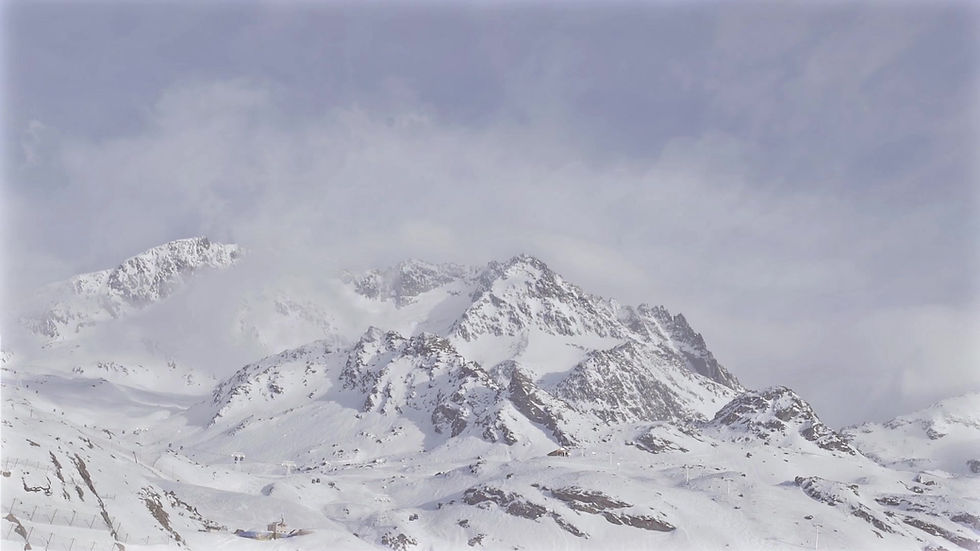From the Darkness of This World: The Cross as the Door to a New Creation in John
- Pr Enos Mwakalindile
- Jun 18
- 4 min read
Updated: Jun 30

In the Gospel of John, sin is not simply described as a moral transgression or a violation of religious law. It is revealed as the condition of the human heart in opposition to its Creator, by rejecting Jesus, who is not just a man, but the Word of God made flesh (John 1:14). This article examines in depth the meaning of sin, the nature of the world’s slavery, and how the cross of Christ opens the door to true freedom through the new creation.
1. Sin as Rejecting the Word of God
John opens his Gospel with a wonderful and royal announcement:
"In the beginning was the Word, and the Word was with God, and the Word was God." — John 1:1
For the Jews, the Word meant the wisdom of God that creates, guides, and saves. For the Greeks, the Logos was the principle of the order of the universe—the unity of reason, meaning, and purpose. But when John says that this Word became flesh (John 1:14), he is telling all that Jesus is the source of life, meaning, and truth (John 1:4).
Rejecting Jesus is not just a moral error—it is rejecting the very essence of our existence. It is rejecting the light that illuminates every person when they come into the world (John 1:9). When Jesus says, “I am the light of the world,” (John 8:12) he is offering an invitation to live by seeing and understanding, not just to continue wandering in darkness (John 3:19-21).
To reject Jesus is to choose darkness—the darkness of unlove, the darkness of ignorance, the darkness of disobedience. This is what John describes as the fundamental sin of the world (John 16:9).
2. The World: A System of Rebellion and Slavery
In the Gospel of John, “the world” does not refer to the earth as a planet or a natural creation, but rather to a system of life that opposes God—a worldview, political leadership, a religion of fear and conditioning, and a culture built on lies and oppression (John 17:14-16).
Jesus came as light into the world, and the world did not recognize him (John 1:10). This is the sad state of a fallen creation. The world is under the control of the powers of darkness, which hold people in chains of fear, sin, and deception (John 3:19; 12:35).
A clear example is the religious leaders of Jerusalem. They had scriptures, traditions, and worship, but they rejected Jesus because they were part of a worldly system that did not want the light of life. They hated Him because He exposed their lies that covered up their wickedness (John 7:7; 9:39-41).
Therefore, sin is not just an individual mistake—it is a combination of people, institutions, and all of history that has turned its back on God. The world is in a state of rebellion against its Savior (1 John 2:15-17).
3. The Cross: The Summit of Redemption and the Beginning of the New Creation
The cross is the place of judgment of false gods and the triumph of the true King. It is not only the place of forgiveness, but also the throne of the new Kingdom. There, Jesus conquers not only our personal sins, but also the false powers of this world (Colossians 2:14–15).
Jesus says:
"And I, if I be lifted up from the earth, will draw all men unto myself." — John 12:32
His crucifixion is His exaltation as King (John 3:14-15). It is a picture of the New Exodus—a journey of freedom from the slavery of sin just as the Israelites were delivered from Egypt (John 8:31-36).
Through his death, Jesus removes the condemnation that was upon the world (John 12:31) and welcomes all into the new covenant of grace. Through the cross, God announces the beginning of a new creation—a world of love, peace, and eternal life (1 John 4:9-10).
4. Invitation to Light and Freedom
John’s Gospel ends not with sadness but with hope. Jesus breathes into his disciples the breath of new creation (John 20:22), just as God breathed into Adam the breath of life (Gen. 2:7). This is the beginning of a new covenant, of children of God who live by the Spirit and not by fear (John 14:16-17).
Believing in Jesus is more than a spiritual decision—it is entering into the light of the new creation, walking in freedom, and participating in God’s work of healing the world (John 15:1-8).
Will you choose light or darkness? How will you respond to the invitation of the King on the cross?
🛤️ Reflection and Practical Exercise
Read John 1:1–14 quietly and ponder any passages that reflect your spiritual state.
Ask the light of Jesus to close the doors of darkness in your life (John 12:46).
Share the good news with someone else this week, welcoming them into the light of Christ.
🙏 Final Prayer
O Jesus, Light of the world, we come before you, shedding our darkness. Draw us close to you by your cross, show us the face of the Father (John 14:9), and make us children of light (John 12:36). This world is full of darkness, but in you we find true freedom. Walk with us, make us new. Amen.
📢 Your Feedback Matters! Write to us below—Which part resonated with you the most? Do you have a question, comment, or challenge? Let's learn together.




Comments